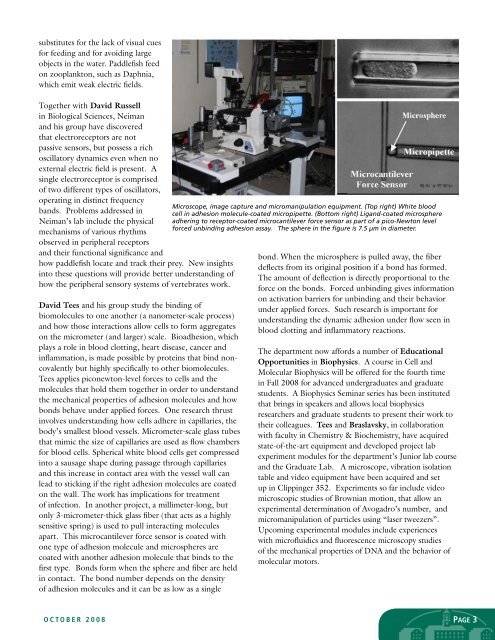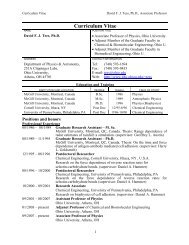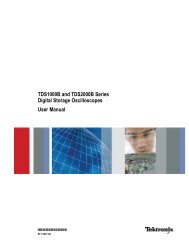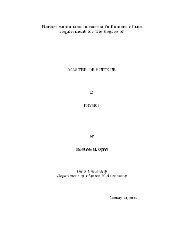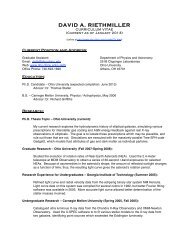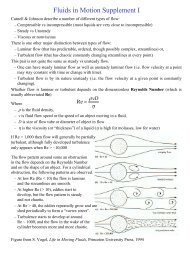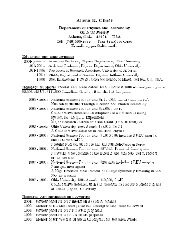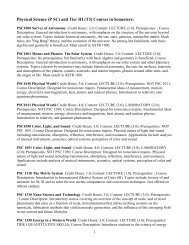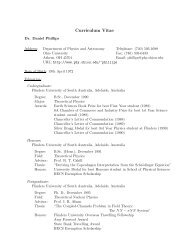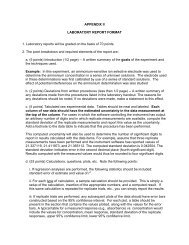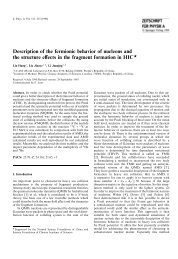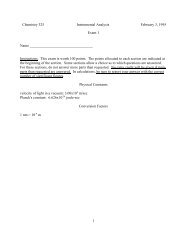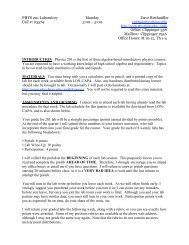Physics & Astronomy Alumni Newsletter PDF - Department of ...
Physics & Astronomy Alumni Newsletter PDF - Department of ...
Physics & Astronomy Alumni Newsletter PDF - Department of ...
You also want an ePaper? Increase the reach of your titles
YUMPU automatically turns print PDFs into web optimized ePapers that Google loves.
substitutes for the lack <strong>of</strong> visual cues<br />
for feeding and for avoiding large<br />
objects in the water. Paddlefish feed<br />
on zooplankton, such as Daphnia,<br />
which emit weak electric fields.<br />
Together with David Russell<br />
in Biological Sciences, Neiman<br />
and his group have discovered<br />
that electroreceptors are not<br />
passive sensors, but possess a rich<br />
oscillatory dynamics even when no<br />
external electric field is present. A<br />
single electroreceptor is comprised<br />
<strong>of</strong> two different types <strong>of</strong> oscillators,<br />
operating in distinct frequency<br />
bands. Problems addressed in<br />
Neiman’s lab include the physical<br />
mechanisms <strong>of</strong> various rhythms<br />
observed in peripheral receptors<br />
and their functional significance and<br />
how paddlefish locate and track their prey. New insights<br />
into these questions will provide better understanding <strong>of</strong><br />
how the peripheral sensory systems <strong>of</strong> vertebrates work.<br />
David Tees and his group study the binding <strong>of</strong><br />
biomolecules to one another (a nanometer-scale process)<br />
and how those interactions allow cells to form aggregates<br />
on the micrometer (and larger) scale. Bioadhesion, which<br />
plays a role in blood clotting, heart disease, cancer and<br />
inflammation, is made possible by proteins that bind noncovalently<br />
but highly specifically to other biomolecules.<br />
Tees applies piconewton-level forces to cells and the<br />
molecules that hold them together in order to understand<br />
the mechanical properties <strong>of</strong> adhesion molecules and how<br />
bonds behave under applied forces. One research thrust<br />
involves understanding how cells adhere in capillaries, the<br />
body’s smallest blood vessels. Micrometer-scale glass tubes<br />
that mimic the size <strong>of</strong> capillaries are used as flow chambers<br />
for blood cells. Spherical white blood cells get compressed<br />
into a sausage shape during passage through capillaries<br />
and this increase in contact area with the vessel wall can<br />
lead to sticking if the right adhesion molecules are coated<br />
on the wall. The work has implications for treatment<br />
<strong>of</strong> infection. In another project, a millimeter-long, but<br />
only 3-micrometer-thick glass fiber (that acts as a highly<br />
sensitive spring) is used to pull interacting molecules<br />
apart. This microcantilever force sensor is coated with<br />
one type <strong>of</strong> adhesion molecule and microspheres are<br />
coated with another adhesion molecule that binds to the<br />
first type. Bonds form when the sphere and fiber are held<br />
in contact. The bond number depends on the density<br />
<strong>of</strong> adhesion molecules and it can be as low as a single<br />
bond. When the microsphere is pulled away, the fiber<br />
deflects from its original position if a bond has formed.<br />
The amount <strong>of</strong> deflection is directly proportional to the<br />
force on the bonds. Forced unbinding gives information<br />
on activation barriers for unbinding and their behavior<br />
under applied forces. Such research is important for<br />
understanding the dynamic adhesion under flow seen in<br />
blood clotting and inflammatory reactions.<br />
The department now affords a number <strong>of</strong> Educational<br />
Opportunities in Biophysics. A course in Cell and<br />
Molecular Biophysics will be <strong>of</strong>fered for the fourth time<br />
in Fall 2008 for advanced undergraduates and graduate<br />
students. A Biophysics Seminar series has been instituted<br />
that brings in speakers and allows local biophysics<br />
researchers and graduate students to present their work to<br />
their colleagues. Tees and Braslavsky, in collaboration<br />
with faculty in Chemistry & Biochemistry, have acquired<br />
state-<strong>of</strong>-the-art equipment and developed project lab<br />
experiment modules for the department’s Junior lab course<br />
and the Graduate Lab. A microscope, vibration isolation<br />
table and video equipment have been acquired and set<br />
up in Clippinger 352. Experiments so far include video<br />
microscopic studies <strong>of</strong> Brownian motion, that allow an<br />
experimental determination <strong>of</strong> Avogadro’s number, and<br />
micromanipulation <strong>of</strong> particles using “laser tweezers”.<br />
Upcoming experimental modules include experiences<br />
with micr<strong>of</strong>luidics and fluorescence microscopy studies<br />
<strong>of</strong> the mechanical properties <strong>of</strong> DNA and the behavior <strong>of</strong><br />
molecular motors.<br />
OCTOBER 2008 Page 3


